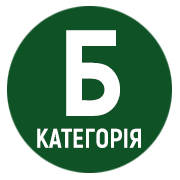SOURCES OF EU LAW
Abstract
The European Union has legal personality and as such its own legal order which is separate from international law. Furthermore, EU law has direct or indirect effect on the laws of its Member States and becomes part of the legal system of each Member State. The European Union is in itself a source of law. The legal order is usually divided into primary legislation (the Treaties and general legal principles), secondary legislation (based on the Treaties) and supplementary law. This article help you to understand better what are the sources of EU law. You should understand the nature and scope of the following sources of EU law: The EU Treaties, in particular the Treaty on European Union (TEU) and the Treaty on the Functioning of the European Union (TFEU). Secondary legislation made under the EU Treaties. “Soft law” comprising non-legally enforceable instruments, which may aid the interpretation and/or application of EU law. Related Treaties made between the Member States. International Treaties negotiated by the Union under powers conferred on it by the EU Treaties. Decisions of the Court of Justice of the European Union (which includes the General Court). General principles of law and fundamental rights upon which the constitutional laws of the Member States are based. In general, the Treaties and the general principles are at the top of the hierarchy, and are known as primary legislation. Following the entry into force of the Lisbon Treaty on 1 December 2009, the same value was also given to the Charter of Fundamental Rights. International agreements concluded by the European Union are subordinate to primary legislation. Secondary legislation is the next level down in the hierarchy and is valid only if it is consistent with the acts and agreements which have precedence over it.
References
2. Електронний ресурс — Режим доступу: https://ru.wikipedia.org/wiki/ Официальный_журнал_Европейского_союза
3. Електронний ресурс — Режим доступу: http://eur-lex.europa.eu/legal-content/EN/TXT/?uri=OJ:C:2008:115:TOC
4. Christine Fretten; Vaughne Miller (2005-07-21). The European Union: a guide to terminology procedures and sources (pdf). UK House Of Commons Library, International Affairs and Defence Section. с. 8. Standard Note: SN/IA/3689. Процитовано 2009-09-03. «Both the Council of Ministers and the Commission are empowered under the EC Treaty to make laws.»
5. Nanda, Ved P. (1996). У Folsom, Ralph Haughwout; Lake, Ralph B. European Union law after Maastricht: a practical guide for lawyers outside the common market. The Hague: Kluwer. с. 5. «The Union has two primary types of legislative acts, directives and regulations»
6. Steiner, Josephine; Woods, Lorna; Twigg-Flesner, Christian (2006). EU Law (вид. 9th). Oxford: Oxford University Press. с. 56–60. ISBN 978-0-19-927959-3
7. JO L 145 du 31.05.2001. Р. 43.
8. JO L 325 du 11.12.2009. Р. 35.



